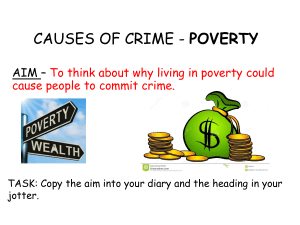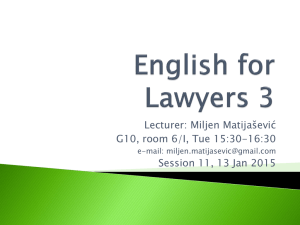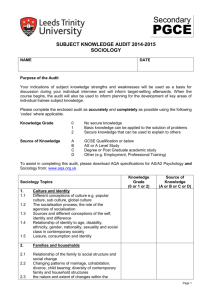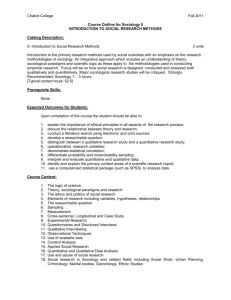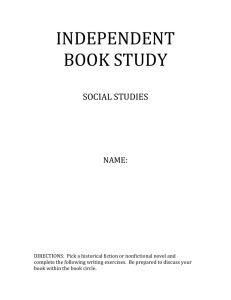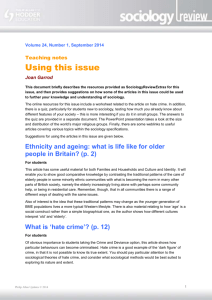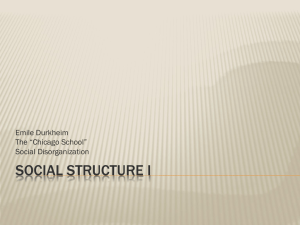Social Problems - Chabot College
advertisement
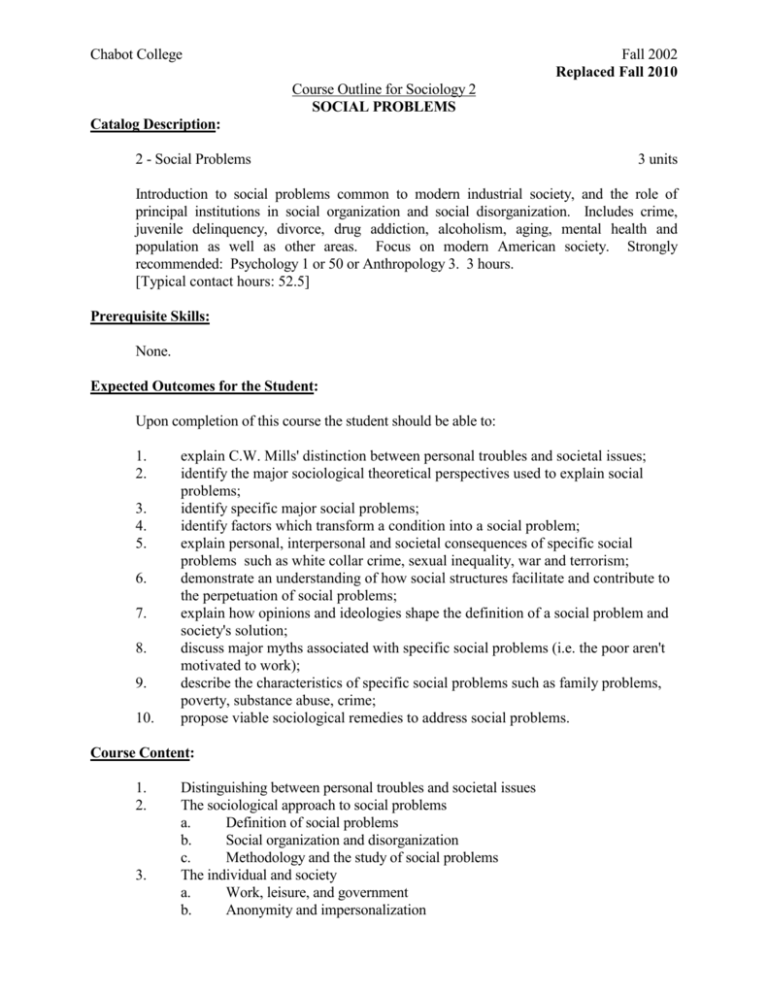
Chabot College Fall 2002 Replaced Fall 2010 Course Outline for Sociology 2 SOCIAL PROBLEMS Catalog Description: 2 - Social Problems 3 units Introduction to social problems common to modern industrial society, and the role of principal institutions in social organization and social disorganization. Includes crime, juvenile delinquency, divorce, drug addiction, alcoholism, aging, mental health and population as well as other areas. Focus on modern American society. Strongly recommended: Psychology 1 or 50 or Anthropology 3. 3 hours. [Typical contact hours: 52.5] Prerequisite Skills: None. Expected Outcomes for the Student: Upon completion of this course the student should be able to: 1. 2. 3. 4. 5. 6. 7. 8. 9. 10. explain C.W. Mills' distinction between personal troubles and societal issues; identify the major sociological theoretical perspectives used to explain social problems; identify specific major social problems; identify factors which transform a condition into a social problem; explain personal, interpersonal and societal consequences of specific social problems such as white collar crime, sexual inequality, war and terrorism; demonstrate an understanding of how social structures facilitate and contribute to the perpetuation of social problems; explain how opinions and ideologies shape the definition of a social problem and society's solution; discuss major myths associated with specific social problems (i.e. the poor aren't motivated to work); describe the characteristics of specific social problems such as family problems, poverty, substance abuse, crime; propose viable sociological remedies to address social problems. Course Content: 1. 2. 3. Distinguishing between personal troubles and societal issues The sociological approach to social problems a. Definition of social problems b. Social organization and disorganization c. Methodology and the study of social problems The individual and society a. Work, leisure, and government b. Anonymity and impersonalization Chabot College Course Outline for Sociology 2 Fall 2002 Course Content (Cont'd): 4. 5. 6. 7. 8. 9. 10. 11. Juvenile delinquency a. Social definitions b. Problems and ecology of the delinquent c. Meeting the problem Crime a. Types of criminals b. Problems and ecology of the criminal c. Types of crime d. Meeting the problem Divorce a. Divorce as a social problem b. Family in divorce c. Meeting the problem Alcoholism a. Social definition b. Alcoholism as a social problem c. Meeting the problem Drug addiction a. Social definition b. Types of addiction and society c. Meeting the problem Gerontology a. Changing social definitions b. Aging as a social problem c. Meeting the problem Mental Health a. Types of mental health b. Mental health and society c. Meeting the problem Poverty a. Social definitions b. Poverty and society c. Meeting the problem Method of Presentation: 1. 2. 3. 4. Lecture - discussion Guest speakers Audio-visual aids Group seminars Page 2 Chabot College Course Outline for Sociology 2 Fall 2002 Page 3 Assignments and Methods of Evaluating Student Progress: 1. Typical Assignments a. Essays: 1) How is the conflict perspective on white collar crime different from the functionalist perspective? Explain how each perspective perceives this social problem and what solutions each perspectives would propose. 2. Explain how multinational corporations contribute to global stratification. b. Group project: 1. Divide the class into groups. In groups, design public policy to reduce poverty in the United States. Present proposals to the class for critiquing. 2. Over a two week period, collect articles from the local newspapers on poverty and the poor. In groups organize the articles, conduct a content analysis and present findings to the class. c. Exercises: 1. Interview a staff person from an organization that works with victims of domestic violence. Write a summary of the interview which should include the purpose of organization, population served, current statistics about the local community, extent of the problem, projected needs for the community. 2. Methods of Evaluating Student Progress a. Exams and quizzes b. student reports c. class participation d. Final examination Textbook(s) (Typical): Understanding Social Problems, Mooney, Linda, David Knox and Caroline Schacht, Wadsworth, 2001, or latest edition. Special Student Materials: None. tf A\Word\/SOC.2.DOC Revised: 1-31-2002



